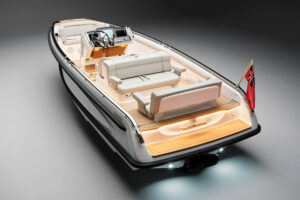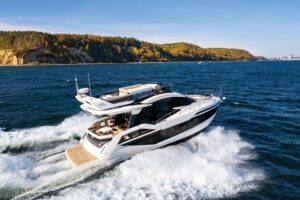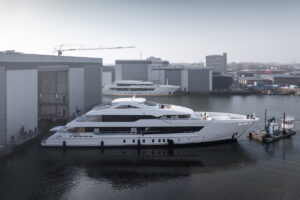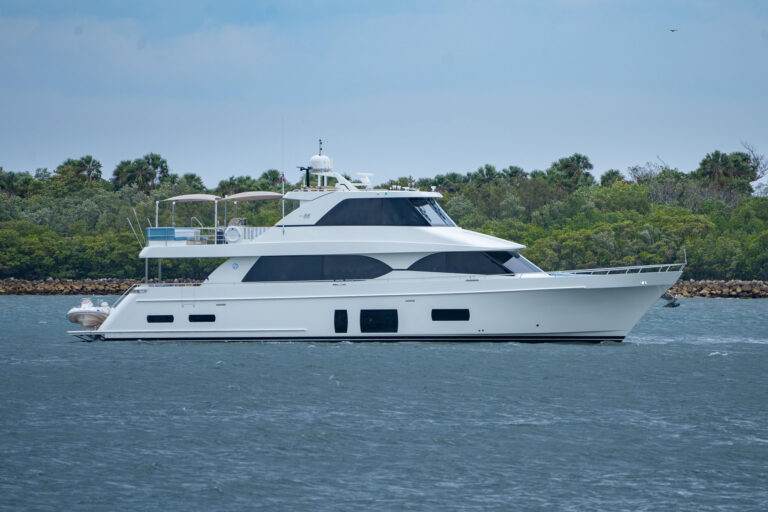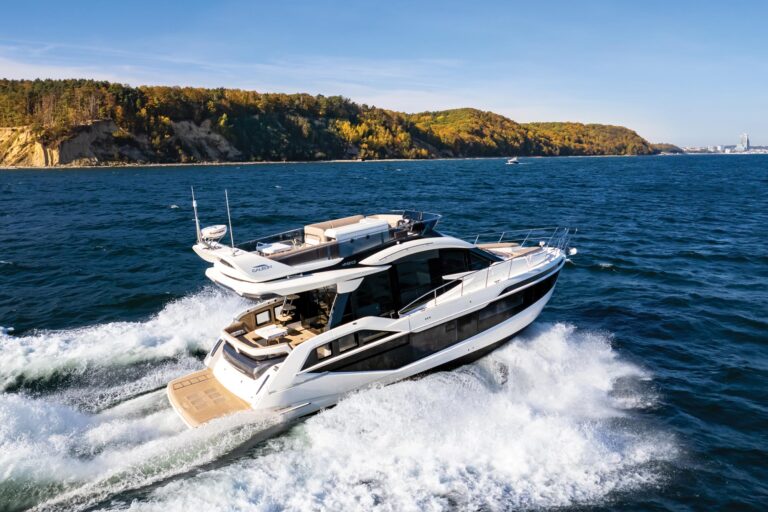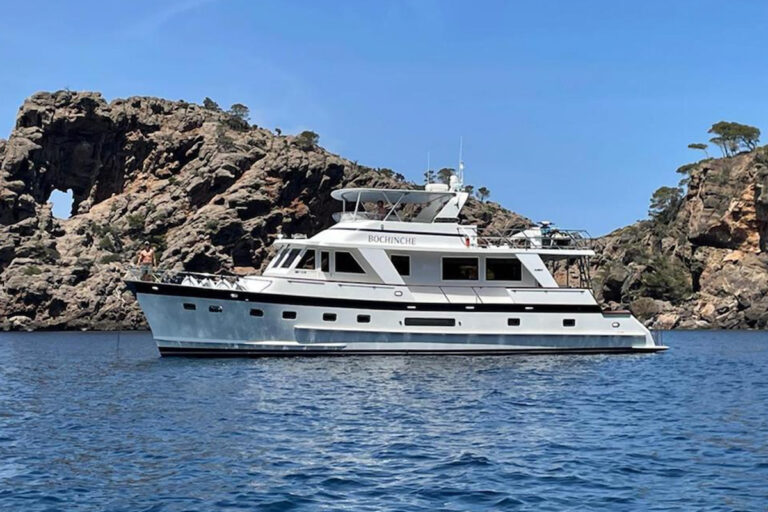The New England lobster boat has come a long way since the days when it was used for fishing. Today it is the concept of choice for many builders wanting to endow their designs with an image of tradition. You have to admire the flowing lines of this classic concept, and it is not hard to see why it has proved attractive to so many owners who shy away from the anonymity of modern power yacht design.
Retro designs based on the lobster boat bring new clients into the power sector. Many of these newcomers have decided to give up sailing and want to rely on power for their pleasure. These ex-sailors want a design that still retains an element of sail, so it is not surprising that several of the builders entering this sector are historically sailboat builders-Hinckley and Little Harbor, for example.
The latest builder to join this select band is British boatbuilder Oyster Marine, whose sailboats are known for their quality and pace. Oyster’s new powerboat is the LD 43, and if you’re wondering what the LD in the boat’s title stands for, it is “lunch and dinner. This could be a subtle reference to one of Oyster’s main competitors’ boats, which feature picnics, but the title really does reflect the sophisticated style of this Oyster. The company’s incentive to enter the power market came from owners who wanted a design that would still be acceptable in the yacht club, but which would get them home on schedule. They might be a husband-and-wife team who wanted to cruise in comfort and style, combining modern performance technology with traditional design values.
A truly international development, the Oyster LD 43 design was developed by Oyster Marine, and the tank testing and laminate specification were developed in Britain. The plug was made in Australia; McDell, in New Zealand, a longtime Oyster sailboat builder, was contracted for the building work. Such was Oyster’s confidence in the design that McDell has been commissioned to build these boats at the rate of one a month.
The LD 43 draws admiring glances wherever it goes. Its sheerline follows sportfisherman style, reverse in the forward section dropping down to a level run aft; the half-round varnished teak toe rail emphasizes this. No bow rails spoil the flow of the lines. Teak grab rails along their edges highlight the shallow coachroof and pilothouse. There is further varnish work around the cockpit coaming, but it is all quite low key and subtle yet stunning in its sheer beauty, some might say pure emotion.
Inside the Oyster is just as beautiful, with polished teak the primary finish. The 43 is very much designed for use by a couple; there is just one comfortable double cabin forward, although guests could be accommodated on the saloon settees. For a boat of this size, the galley is huge with all the fittings for modern domestic use. Opposite is the head, again with generous space. You have to admire the way there has been no attempt to squeeze more into the available space.
The options allow you fit a second twin cabin on the port side. This entails having a smaller galley. The cabin then fits in under the port side of the helm so you also lose one of the lovely helm seats. It is a lot to give up for two extra berths since the helm seats are a real treasure, comfortable and cushioned and tailor-made for extended cruising. Behind these seats are two luxury leather settees; each one has its own teak table that can be linked to create one dining table large enough to entertain six people in considerable style.
Throughout the interior the decks are teak with white holly inlays, and these lead aft to a full-width rear door and windows. The aft bulkhead is constructed in stainless steel and glass, which at first looks alien to the traditional concept, but then you realize how practical it is. The windows on each side of the door can be lowered and, with the door open, you have virtually a full open-plan cockpit and saloon. It also gives the the entire area a feeling of light and grace that might not have been possible with more traditional wood frames.
The cockpit features additional dining space, with a table and settees so you can live in comfort on the Oyster in fair weather or foul. This table even incorporates a fridge to keep drinks and ice readily at hand. There is a retractable canopy overhead that forms the support for fully enclosing cockpit screens.
So much for comfort and tradition-when it comes to the technical part there is nothing old-fashioned about this Oyster. Twin 440 hp Yanmar diesels are coupled to Hamilton water jets via a reverse/reduction gearbox, giving smooth power that is very much in keeping with the sophisticated style. An option for future versions will be the larger 480 hp electronic Yanmars; you can specify conventional shaft and propeller drive or the new IPS Drives from the Volvo Penta range.
Access to the engines is quite brilliant: Each of the settees in the saloon hinges up under hydraulic power to present you with clear side access. If that is not enough, there are central hatches in the deck that allow access to all the daily checkpoints and generator. It might sound simple, but it has taken careful engineering to achieve what must be the best engine access I have ever seen.
A small panel on the dash conceals what is one of the most advanced control systems on any boat. This is the maiden installation of Hamilton’s Blue Arrow control. Billed as the first three-axis joystick, it allows you to park this boat in subtle ways, controlling the jet thrust simply by pointing the joystick lever. There could be a small problem with the amount of water that flows out of the jets during maneuvering, which might upset neighbors moored close by in the marina.
For normal driving on the high seas, the Oyster has conventional throttle levers; use these for harbor maneuvering if a joystick is not your choice. The power comes in smoothly, although, unlike other jet boats I have driven, you need to use almost full power to get this boat onto plane. The performance figures show the speed only starting to pick up over the last 500 rpm of the engine speed range; it helps to use the trim tabs to get onto plane. This suggests that these jets lack the low-speed thrust that is normally a feature of jet boats. That apart, driving this new design is largely pure pleasure. The top speed is not high, at a little over 30 knots-it is not the speed that counts, but the pure emotion that the 43 generates.
The pleasure derives from driving a well-balanced boat that also surrounds you with a great feeling of well-being. You can see Oyster’s sail heritage in this design, in the small details that give so much pleasure. The Oyster LD 43 induces a level of contentment that I have rarely found in any other boat.
Contact: Oyster Marine, Fox’s Marina, (+44) 1473 688888; www.oystermarine.com

